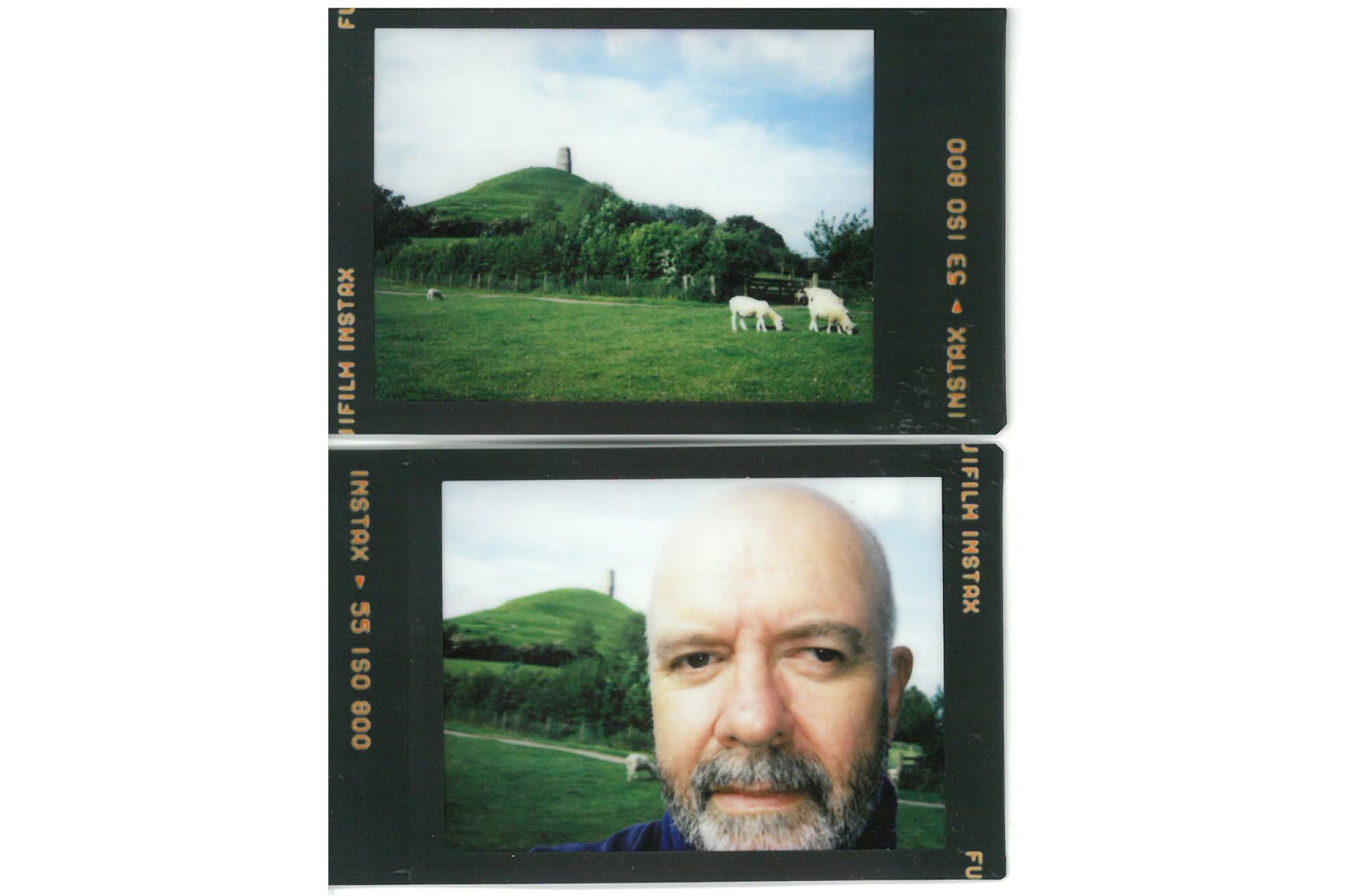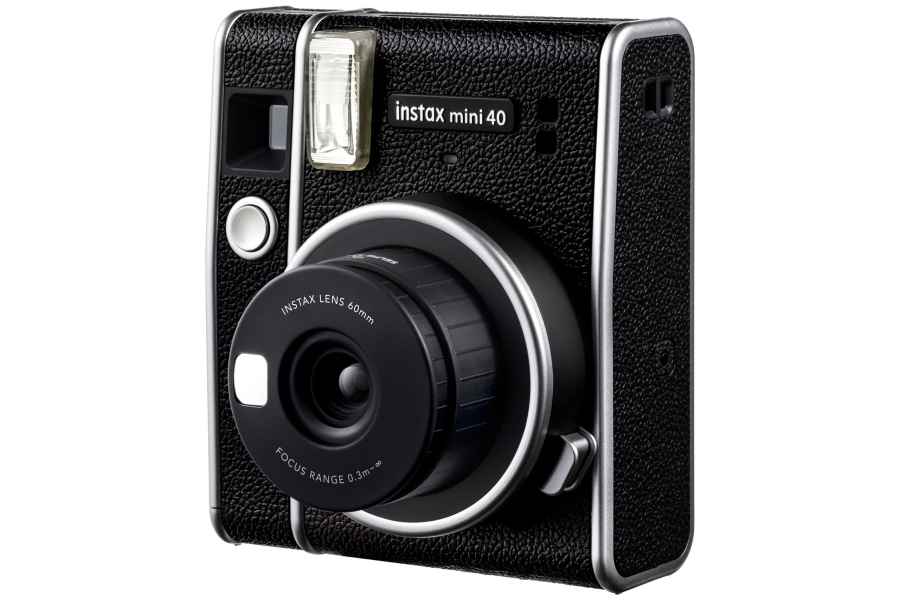Fujifilm instax mini 40 with Contact Sheet film at a glance:
- Uses Fujifilm Instax Mini film
- 33mm equivalent f/12.7 lens
- 0.3 to 0.5m selfie mode, with built-in selfie mirror
- Powered by two AA batteries
- 104x121x65mm
- 330g
- instax.com
FujifIlm has carved out a profitable niche with its instax range of instant film cameras, which now appeal to a much wider (and younger) demographic than its higher-priced digital line-up. The instax mini 40 follows on from the mini 11, with attractively chunky retro styling. It looks and feels more like a ‘serious’ camera compared to the rather jejune mini 11, while still being very easy to use. It’s also cheaper than the higher-end Mini 90.
Although made from plastic, the mini 11 feels sturdy enough, and it’s relatively light at 330g. This is not a camera if you like adjusting shooting settings, though, as it only features fully automatic exposure and full-time auto flash. There’s no tripod bush either, so it’s very much a case of point, click, print.

The Fujifilm instax mini 40 follows on from the mini 11, with attractively chunky retro styling
Fujifilm instax mini 40 with Contact Sheet film key features:
- Flash: The auto flash cannot be turned off, but comes in handy in low light. It has an effective range of 0.3m to 2.7m.
- Instax prints: Prints appear from a slot on top of the body and take about 90 seconds to appear.
- Viewfinder: The viewfinder is quite titchy and the shutter button below it is not ideally placed for landscape-format shots.
- Lens barrel: You need to pull the barrel all the way out to access Selfie Mode.
Compared to a conventional camera, the viewfinder window feels quite small, while the shutter button could be better placed for landscape-format shots. Otherwise, the mini 40 is a cinch to use, as is loading the film. A built-in selfie mirror makes it simple to get self-portraits, and you can also use the selfie mode for general close-ups.

The instax mini 40 being used in selfie/close-up mode. Note the lens barrel has been pulled out
To access the selfie/close-up mode, you need to pull out the lens barrel manually. I found this a bit confusing at first – when you pull the lens out you see a ‘Selfie Mode’ arrow but it’s not immediately obvious that you need to pull it further to the ‘Selfie On’ label that appears when the lens is fully extended. But to be fair, even simple cameras take some getting used to. The mechanism was stiff to begin with, too, but loosened up with use.

The instax mini 40 looks and feels more like a ‘serious’ camera compared to the mini 11
The mini 40 takes instax mini film, including the new ‘Contact Sheet’ range. With the film photography revival showing no sign of slowing, the contact sheet stylings are very much on trend. Print time is about 90 seconds and the tones are attractively pale and retro, without looking contrived. Shoot outdoors and the built-in flash can blow out highlights, but the instax range is not targeted at loupe jockeys.
Making contact
The Contact Sheet film delivers attractive results. Given the camera’s retro appeal, it would be great to have black & white Contact Sheet film too, and I suspect that could be next on the list if this film proves to be popular. Having to fork out £8.99 for ten exposures makes you more mindful about composition, too.

A couple of test prints taken with the instax mini 40 loaded with contact sheet film
Fujifilm instax mini 40 with Contact Sheet film: Our Verdict
For just under £90, this is a likeable and easy-to-use instant camera, and the hipster-esque Contact Sheet film is reasonably priced. There are a few handling quirks, and while the final prints are not always super-sharp or perfectly exposed, it’s all part of the lo-fi charm. Nobody should be looking too closely at the credit-card-sized prints anyway.









